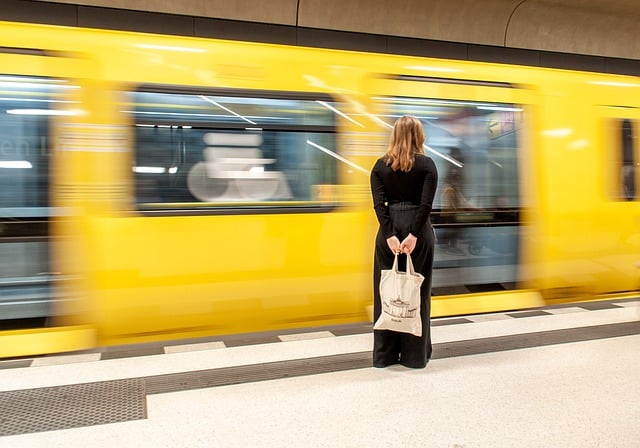Hey, did you know that public transport has a huge impact on our carbon footprint? So if we want to get around in an environmentally conscious way, we should use public transport. In this blog, you’ll learn more about how we can make this positive change. Let’s get started!
Why is going green important?
Have you ever wondered why it is so important to go green? Maybe you think that your actions alone won’t have much of an impact, or that it’s already too late to make a difference anyway. But that’s not true! Each of us can make a contribution and start in small ways to make the world a little better. Because our environment is in danger: climate change threatens our nature and thus also our own lives. That’s why we have to act and become aware of the impact our actions have on the environment. One way to travel in an environmentally conscious way is to use public transport. You can find out exactly how this works and what benefits it brings in this blog article. So stay tuned and let’s do something for our environment together!
Public transport as an environmentally friendly alternative to the car
Do you want to travel in an environmentally conscious way and improve your carbon footprint? Then public transport is a great alternative to the car. Buses, trams and trains are far more climate-friendly than cars. They emit less CO2 and consume less energy per passenger kilometre. Especially in cities, there is a dense network of public transport that you can use. This not only saves money, but also time and nerves in city traffic. And who knows, maybe you’ll even meet new people on your way to work or university or discover interesting places in your city that you didn’t know about before. So why not ditch the car and try out environmentally friendly public transport?
CO2 balance in comparison: How much CO2 do you save by using public transport?
If you decide to use public transport, you are not only doing something good for the environment, but also for your wallet. But how much CO2 can you actually save? Compared to using your own car, public transport has a clear advantage. According to a study by the Federal Environment Agency, a person who travels daily by public transport can save up to 1.5 tonnes of CO2 per year. This is roughly equivalent to the annual emissions of two average households in Germany. By using buses and trains, you are therefore actively contributing to improving the climate balance and protecting our environment.
The impact of public transport on air quality in cities
When it comes to air quality in cities, we often think of factory chimneys or smoke from cars. But did you know that public transport also has a big impact on it? Buses, trams and underground trains emit less CO2 than cars, but they still produce nitrogen oxides and particulate matter. Especially in inner cities, this can lead to poor air quality. However, there is hope here, too: many cities are investing in more environmentally friendly buses and trams or are going electric. Moreover, if more people switch to public transport, traffic will be reduced overall – which means fewer emissions and better air quality for everyone.
Sustainability in public transport: measures to reduce emissions and resource use
There are many ways to reduce emissions and resource consumption in public transport. One measure, for example, is the use of electric buses or hybrid buses, which emit significantly less CO2 than conventional diesel buses. The use of renewable energies such as solar or wind energy to power public transport is also an important step towards sustainability. Furthermore, car pools can be formed to reduce traffic on the roads and thus also minimise CO2 emissions. Another starting point is optimised route planning to avoid unnecessary journeys and thus emissions. Through these measures, we can all contribute to protecting our environment and travelling sustainably.
Constraints and challenges in public transport: how can they be overcome?
When it comes to reducing our carbon footprint, public transport plays a big role. But unfortunately, there are often limitations and challenges that prevent us from using it. Overcrowded buses and trains, delayed or cancelled connections and lack of accessibility are just a few examples. To overcome these problems, we need to find solutions together. This includes, for example, better planning and organisation of public transport as well as investments in modern technologies and infrastructure. Awareness of the benefits of public transport must also be raised – both among users and decision-makers. This is the only way to ensure that it remains an attractive alternative to the car and thus makes an important contribution to reducing our carbon footprint.
The role of politics in promoting environmentally friendly behaviour in public transport
When we talk about environmentally friendly public transport, political decisions play an important role. Policymakers can promote the use of environmentally friendly means of transport through targeted measures and thus improve the CO2 balance. This includes, for example, the expansion of cycle paths, the promotion of electric cars or the introduction of free public transport tickets for pupils and commuters. But we as citizens can also exert political pressure and campaign for environmentally friendly means of transport. The more people campaign for sustainable mobility, the more likely it is that political decisions will be made in this direction.
Conclusion: Why it pays to use public transport and how we can all contribute to improving our carbon footprint
When you choose public transport, you make an important contribution to environmental protection. Compared to cars, buses and trains emit much less CO2. But that’s not all: traffic jams and parking problems are a thing of the past when you travel by bus or train. And who knows, maybe you’ll discover new places in your city on your way to work or university that you didn’t know about before. Of course, there are also situations where the car is the better choice – but if possible, you should make it a habit to switch to public transport. In this way, we can all help to improve our carbon footprint and create a more liveable environment for ourselves and future generations.

